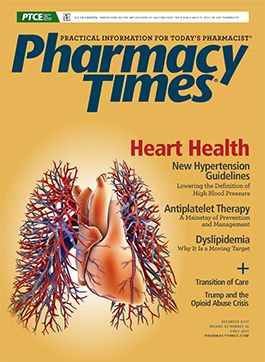The Impact of Telemedicine on Pharmacists and Implications for Controlled Substances
To better accommodate this significant portion of the population, a new form of health care has broken through to redefine the nature of medici- nal services: telehealth.
One-quarter of Americans live in rural areas and are unable to easily reach medical services.1 To better accommodate this significant portion of the population, a new form of health care has broken through to redefine the nature of medicinal services: telehealth. This new branch—which includes telemedicine, telepharmacy, telepsychiatry, and more—has allowed primary care providers, as well as previously unavailable specialists, to reach remote patients. As they continue to become increasingly popular, telemedicine and telepharmacy will represent hope for those in underserved areas. This new form of health care may, however, cause complications regarding updates to legislation and job security for pharmacists.
Telehealth, federally defined as the all-encompassing umbrella of technology-based health care, must be distinguished from its counterpart, telemedicine. Telemedicine, which is strictly the use of technology to support clinical practice, is a focus for pharmacists, as it directly correlates to prescribing and dispensing medications.2 Additionally, this focus may extend into its own category of telepharmacy. With more prescriptions being issued via technology, the question becomes, what impact does telepharmacy have on prescribing controlled substances without in-person meetings between patient and providers?
A controlled substance is defined in the Controlled Substances Act as a drug or substance that is a scheduled medication requiring a prescription and tighter restrictions because of its potential for abuse.3 Previously, most states required a face-to-face relationship to be established before controlled substances could be prescribed. Now, however, states are beginning to allow technology-based meetings to be accepted as an established relationship.4 Delaware, Florida, Michigan, New Hampshire, Ohio, and West Virginia are among the states that consider video sessions with audio a “patient—provider relationship.”5 Although this raises concern, these states implemented specific restraints regarding what controls may be prescribed. Some safeguards include allowing only prescriptions within the provider’s scope of practice, having a legitimate medical reason, and prohibiting prescriptions for opioids or benzodiazepines.4
Under these updated regulations for patient—provider relationships, a frequent problem is that the provider must be licensed within the patient’s state of residence. One method to overcome this barrier is to allow multistate licensure for medical professionals. This would be similar to a Nurse Licensure Compact, which allows nurses to practice both in their home states and other states that have signed the compact.6 Additionally, the federal government is looking to adjust legislation to simply require doctors to have valid licenses in the jurisdictions where they practice, as opposed to where the patient lives. This change would broaden the scope of telemedicine, allowing doctors to reach more locations in less time without the cost of multiple licenses.6
Furthermore, an additional concern with cross-state licensure is the potential loss of pharmacists’ jobs due to telepharmacy. This assumption is incorrect. On the contrary, it increases the demand for pharmacists. Because pharmacists are a major line of communication between patients and providers, telepharmacy provides an avenue for pharmacists to have more patient contact. Some examples include one-on-one consultations with patients, advising sessions with caregivers, on-demand services to patients in need, and follow-up meetings to increase the likelihood of adherence.7 A recent study that focused on veterans with diabetes showed higher compliance, with a larger percentage of patients meeting their goals because of the follow-up care and availability of pharmacists with the assistance of telepharmacy.8 Telepharmacy would provide more opportunities for patients to meet with a pharmacist in a safe and comfortable atmo- sphere that they may not have access to otherwise.
Telemedicine is an option that would provide med- ications and services to an underserved population. This technology is still new and evolving, but states and licensure boards have begun to acknowledge the increase in patient compliance and service for those in remote areas. Although there are delays and concerns, telemedicine is making adequate health care for all patients a tangible reality.
Brittany N. Galop is a PharmD candidate at the University of Kentucky College of Pharmacy, Lexington.
Joseph L. Fink III, BSPharm, JD, DSc (Hon), FAPhA, is a professor of pharmacy law and policy and the Kentucky Pharmacists Association Endowed Professor of Leadership at the University of Kentucky College of Pharmacy, Lexington.
References
- Coffey C. Family says pharmacy error nearly killed boy. NBC 5 Chicago website. nbcchicago.com/investigations/Family-Says-Pharmacy-Error-Nearly-Killed-Boy--24741395html. Published February 26, 2014. Accessed November 2, 2017.
- Strategies to reduce medication errors: working to improve medication safety. US Food and Drug Administration website. www. fda.gov/Drugs/ResourcesForYou/Consumers/ucm143553.htm. Updated October 23, 2015. Accessed November 10, 2017.
- Blank C. Pharmacist error rate rises as workload climbs. Drug Topics website. drugtopics.modernmedicine.com/drug-topics/news/pharmacist-error-rate-rises-workload-climbs. Published September 11, 2015. Accessed November 10, 2017.
- Allen M, Pierce A. Medical errors are No. 3 cause of U.S. deaths, researchers say. NPR website. npr.org/sections/health-shots/2016/05/03/476636183/death-certificates-undercount-toll-of-medical-errors. Published May 3, 2016. Accessed November 10, 2017.
- Long R, Roe S. Chicago moves closer to easing pharmacist workload. Chicago Tribune. chicagotribune.com/news/watchdog/druginteractions/ct-pharmacy-rules-chicago-met-20171010-story.html. Published October 10, 2017. Accessed November 10, 2017.

